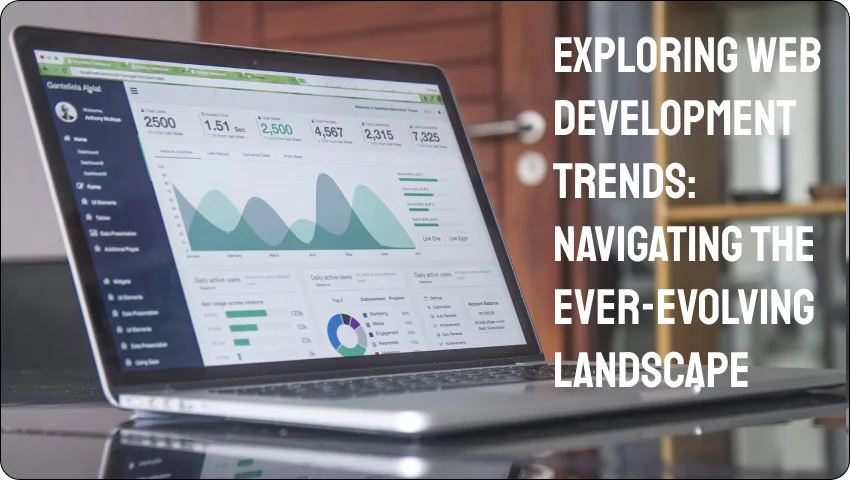
Web development is an ever-evolving realm, a playground for innovation. In this blog, we delve into the dynamic universe of web development trends. These trends, though ever-changing, are timeless in their ability to mold how we construct, design, and elevate web user experiences. From the rise of Progressive Web Apps offering app-like experiences to the enduring importance of responsive design and accessibility, these trends continually redefine the web's landscape. As the digital world advances, one thing remains clear: the pursuit of user-friendly, accessible, and captivating web experiences is an unwavering constant amidst the ever-shifting tides of technology.
Web development trends come and go, but prioritizing accessibility, usability, and user satisfaction remains a constant, defining aspect of success.
Progressive Web Apps continue to gain momentum, offering a seamless, app-like experience for users. They combine the best of both web and mobile applications, offering offline functionality, push notifications, and fast load times. As internet connectivity improves globally, PWAs will likely become the go-to choose for many businesses looking to engage users on the web.
Responsive web design is not a trend that's going away. It's a fundamental aspect of web development, ensuring that websites adapt to various screen sizes and devices. A responsive approach is essential for providing an excellent user experience, which is always a priority.
Web accessibility has shifted from being a trend to a core principle. Making websites accessible to all, including those with disabilities, is a legal requirement in many places. Prioritizing web accessibility ensures that your website is user-friendly for everyone, a trend that's not going anywhere.
Single Page Applications have gained popularity due to their smooth, fluid user experience. They load once and then navigate like a native app, reducing loading times and providing a more interactive interface. SPAs are likely to remain a trend as more businesses adopt this approach.
Serverless architecture simplifies the deployment of web applications. With services like AWS Lambda and Azure Functions, developers can focus on code rather than managing servers. This trend reduces infrastructure costs, making it an appealing option for many projects.
Dark mode, or dark theme, is no longer just a trend; it's now an expected feature in websites and applications. Users appreciate the choice to switch between light and dark themes for both aesthetics and reducing eye strain. Implementing dark mode has become a standard practice.
Voice search continues to rise in popularity. Optimizing websites for voice search, as well as text-based search, is a must for web developers. This trend is driven by the increasing use of voice assistants like Siri and Alexa, and it's likely to continue evolving.
Web Assembly is a low-level assembly-like language that runs in web browsers. It allows developers to run code at near-native speed. It's a trend that's opening up new possibilities for web applications, especially those that require high performance, like games and complex simulations.
Integrating AI and machine learning into web applications is becoming more accessible. Developers can utilize pre-built models and APIs to add features like chatbots, recommendation systems, and data analysis to websites. This trend enhances user experiences and personalization.
Real-time web apps, which provide instant updates and interactions, are gaining traction. Technologies like WebSocket’s enable this trend, enhancing collaboration tools, messaging apps, and live-streaming platforms.
It's crucial for developers to stay informed and adapt to the changing landscape. Implementing these timeless trends can lead to more successful, user-friendly, and future-proof web applications. Keep in mind that while trends may shift, the core principles of user experience, accessibility, and performance remain constant in the world of web development.
Your email address will not be published. Required fields are marked *
Comments